Steve Maxwell’s
Cottage Industry page 26
Dream Building
On a Ravine Lot page 17
Hockey Fights
On The Jobsite page 30


Steve Maxwell’s
Cottage Industry page 26
Dream Building
On a Ravine Lot page 17
Hockey Fights
On The Jobsite page 30

How Edmonton contractor Les Yochim is plotting his course through Alberta's volatile economy























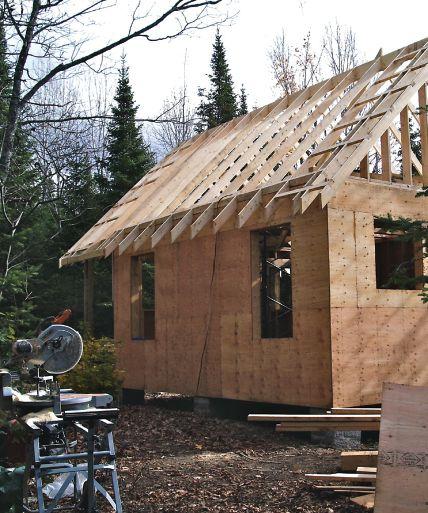
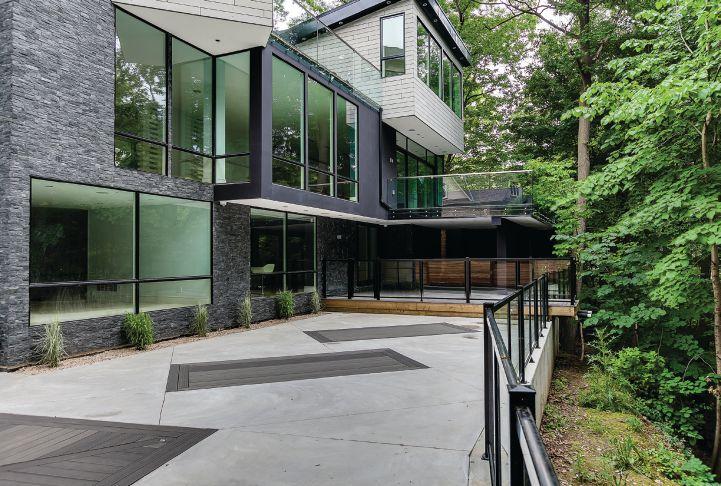

Interview with Les Yochim, BelVan Construction 10
In which the Edmonton-based contractor discusses how his firm deals with a fluctuating provincial economy.
Creative Eye: Hillside House, Toronto 17 Toronto is a ravine city. Creative opportunities abound for design-build contractors who know how to build on parkland.
Steve Maxwell’s ‘Easy Keeper Cottage’ 23 From his base on Manitoulin Island, Ontario, our tools editor shares his best cabin building tricks and tips.

”The reno business is a $72 billion juggernaut.
Steve Payne Editor
spayne@canadiancontractor.ca
”
By Steve Payne
The reno boom continues. In its annual report on the size of our industry, Toronto-based Altus Group, a real estate consulting firm, says that Canadians spent almost $72-billion on home improvements last year.
And that's just home improvements, mind you. The new homes industry hit some $54 billion in revenues last year. Gone are the days when the giant new homes sector dwarfed the “hook and ladder” business of renovations. Now the industry that rips it out and rebuilds it is the bigger fish.
So if, like me, you get bored of hearing how high tech industries like aerospace are where Canada's job future lies, you will know it's not entirely true. Canada's aerospace sector has revenues in the $28-billion range, which is just 40 per cent of the size of the home improvement industry. Even a huge industry like prescription drugs ($25 billion a year) is small compared to our industry.
So the next time you read about another big handout from Ottawa in the hundreds of millions of dollars to an aerospace firm like Bombardier, which can't even deliver, on time, the streetcars it has been contracted to build for the City of Toronto, ask yourself the Rodney Dangerfield question.
Why can’t we get any respect?
Given what we contribute to the economy, everyone who works in the renovations business ought to be proud of what we do.
Volume 18, Number 4 July/August 2017 canadiancontractor.ca | Tel: 416 442 5600 80 Valleybrook Drive, North York, ON, M3B 2S9
Canadian Contractor, established in 2000, is published six times a year by Annex Business Media. PUBLICATION MAIL AGREEMENT #40065710
Editor Steve Payne spayne@canadiancontractor.ca
Contributing Editors Rob Blackstien, John Bleasby, Alec Caldwell, Mike Draper, Steve Maxwell
Art Director Lisa Zambri
Publisher Rob Koci rkoci@canadiancontractor.ca
Account Coordinator Tracey Hanson thanson@@annexbizmedia.com
Circulation Manager Beata Olechnowicz bolechnowicz@annexbizmedia.com
Tim Dimopoulos, Vice President tdimopoulos@annexbizmedia.com
Ted Markle, Chief Operating Officer tmarkle@annexweb.com
Mike Fredericks, President & CEO
Circulation
email: lmalicdem@annexbizmedia.com
Tel: 416-442-5600 ext 3547
Fax: 416-510-5170
Mail: 80 Valleybrook Drive, Toronto, ON M3B 2S9
Subscription Rates
From time to time we make our subscription list available to select companies and organizations whose product or service may be of interest to you. If you prefer not to receive this information, please contact our circulation department in any of the four ways listed.
Annex Privacy Officer privacy@annexbizmedia.com Tel: 800-668-2374
No part of the editorial content of this publication may be reprinted without the publisher’s written permission. ©2017 Annex Publishing & Printing Inc. All rights reserved.
We acknowledge the [financial] support of the Government of Canada.




Bob Collins
Home Building Centre – Gravenhurst Gravenhurst, ON








When your reputation is built on quality, you depend on relationships built on trust. That’s why you can trust the Experts at Home Building Centre and Home Hardware Building Centre to provide the tools, materials and services you depend on – from dedicated contractor sales staff and easier ordering through phone, fax or email to job site deliveries, credit services and package pricing. With a relationship built on trust, you know you’re building on a strong foundation.

pronews.ca













Three years ago, we wrote a post about the City of Toronto’s often nonsensical tree preservation rules. Caroline in Toronto who is working with a design-build firm to build a new home on her property (and for some reason tackling the tree permit issue herself) emailed us another chapter in the story.
“Crazy time with the City of Toronto”
I just found your old article from 2014 about a contractor going through hell with the City of Toronto’s tree protection people. Well, I’m also going through a crazy time right now with the city on this issue.
I want to build a new house on my 50 foot lot. It for some reason has two city trees on it whereas all other the lots have one or none. These trees are well over 60 years old and are, I think, boring old Norway maples. They are not in great shape due to bad pruning for hydro lines, etc. and they have their roots exposed above ground.
I want to remove one of the city trees – because it is right where I need to put my new driveway – and replace it with three trees at my own expense.
But because of their “tree protection zone” – and having to move the old driveway to allow for sideways clearance – the city says I can only have a driveway less than their own minimum width of 3 metres. The city wants us to have a small driveway at the road, then past the tree protection zone we can expand it to fit the garage – though it will end up bending a few times. CRAZY!
Why did I have two city trees in the first place?
By the way, my councillor is useless. His assistant says, “We can’t change something that happened 60 years ago!”
Any advice from your readers?
Caroline
Last month, we linked to a story in the Toronto Sun, in which a homeowner in the US had found the contractor of their dreams –only to have doubts about hiring him because of his TRUMP sticker on his work truck. We asked contractors to let us know if they worried about offending customers with political bumper stickers. Here is one reply…
Proud of his Trump bumper sticker I did it! I had a Trump 2017 bumper sticker on my work van for a year before the election. I bought a few at a gas station in Florida
in 2016. I work in the Barrie, Ontario area and I had way more positive reaction to it than negative. I do mostly ICI work, but seriously, if a customer told me they found my political opinion offensive, I would just pack up and leave. Being self-employed does have its benefits!
Mark Mitchell
In May, construction jobsites emptied across the province of Quebec as the one of the largest construction strikes in recent history took hold. At press time, the workers had been legislated back to work, with binding arbitration pending. Here is one response from a reader.
“We need right to work legislation in Quebec”
The unions are driving residential construction underground. Many of my friends do not understand the cost of construction in Quebec. Oftentimes I will hear, “I have hired a carpenter at $35 an hour. You are ripping me off at $65 an hour.” It is very hard to compete in the residential market. We lose contracts by being honest. There are so many carpenters and trades people who just want to work. We need right to work legislation to even the playing field in residential construction in Quebec.
Eva
Lemanczyk
The following post was in response to our story about a detached house under construction which collapsed against its neighbour in high winds last fall in Toronto.
“Pay peanuts, get monkeys”
When you pay peanuts you get monkeys. Nowadays many builders and GCs are those monkeys. They watch a few reality TV shows, get some drawings made up and they are now home builders. Maybe we need more unqualified builders like this – it makes more work for the pros!
For example, nowadays 50 per cent of our work is repairing work recently performed by others. It’s good for business.
I’d like to say to my fellow experienced contractors: charge more, work less. They’ll always be sh**y contractors in our business!
Joe


TV personality and building expert Damon Bennett is giving away $5,000 worth of GRK deck fasteners AND a brand new Paslode nailer, to the builder of the best GRK deck he can find. It's all part GRK's

Your
www.canadiancontractor.ca/ deck-contest/ Send three photos of your best deck project where you used GRK fasteners. Explain why your GRK deck is the best deck ever.
Damon will pick the top entries for a Canadian Contractor Stuff We Like feature in the Sept/Oct issue. The winning deck will be featured in the November show issue.
“No purchase necessary. Contest closes October 31, 2017. See www.canadiancontractor.ca/deck-contest/ for full contest rules.” “Contest not available in the province of Quebec”


n May, the GTA’s new housing market showed few signs of slowing down, especially the condominium segment, the Building Industry and Land Development Association (BILD) announced on June 23.
Sales of new multi-family homes, condo apartments in highrise and mid-rise buildings and stacked townhomes, continued to be strong and the prices for available units increased substantially, according to Altus Group, BILD’s official source for new-home market intelligence.
Prices of available homes in the low-rise single-family sector were also up but the pace of increase was not as dramatic as in recent months.
“For the new homes market, the province’s fair housing plan has had little real effect,” said BILD president and CEO Bryan Tuckey. “Prices continue to increase and supply, especially for single-family low-rise homes, continues to be low. The price acceleration in the condo portion of the market is especially worrisome since it not only represents the lion’s share of new housing in the GTA, it’s also making it difficult for condos to remain the affordable option.”
About 86 per cent of the 3,902 new homes sold last month were multi-family condo apartments in high-rise and mid-rise buildings and stacked townhomes, while only 14 per cent were low-rise single-family homes.
There were 3,357 sales of new condos in May, slightly fewer than a year ago but 61 per cent above the 10 year average. The 545 sales of new single-family low-rise homes was a 76 per cent drop from last year and 68 pe rcent off the 10 year average.
2017 is proving to be a very strong year for sales of new homes, with record year-to-date sales. Three out of four of the 22,814 new homes purchased in the GTA so far this year were condo apartments.
The average price of available new condo apartments was up more than $30,000 from April. May’s $604,683 average price marked a 33 per cent increase from a year ago. The average available unit was 814 square feet and the average price per square foot was $743. A year ago, the average price per square foot was $573.
In May, the average price of available new low-rise singlefamily homes was $1,222,699, an increase of about $10,000 from April and a 40 pe rcent increase from a year ago.
For the first-time the average asking price for available new townhomes surpassed the million dollar mark. Available new detached homes reached that milestone only 14 months ago, in March 2016. In May, the average asking price for available detached homes in the GTA was $1,942,316, while the average price for available semi-detached was $919,231 and for townhomes was $1,002,220.
The supply of new homes, the number of homes available to buyers in builders’ inventories at the end of the month, increased modestly in May but it was still far below a healthy level and it was 8,000 units less than a year ago.
At the end of May, there were 10,820 new homes available to buyers in the GTA, of which 9,406 were condo apartments and 1,414 were low-rise single-family homes. Last month there were 9,387 new homes available to buyers and a year ago there were 19,209 available in builders’ inventories. In May 2006, there were 29,754 new homes in builders’ inventories, of which 16,420 were low-rise single-family homes.
“The combination of lower sales, some increase in inventory and slower price growth in May compared to April was the first hint we have had of some hesitation among potential buyers of single-family homes,” says Patricia Arsenault, Altus Group’s executive vice president of research consulting services. “But in the condominium apartment sector, it was still full steam ahead in May. Sales were steady and prices posted strong increases, meaning the increase in available inventory in May was not due to wavering demand but rather the burst in new condo project openings. Over 4,900 new units were brought to the market, almost twice as many as in the previous month, and many were in projects that launched near month end.” cc







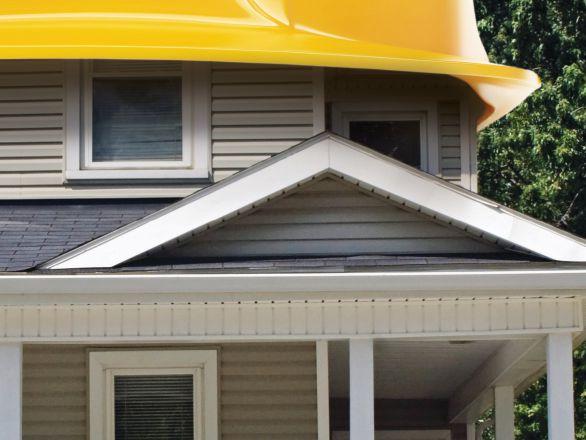
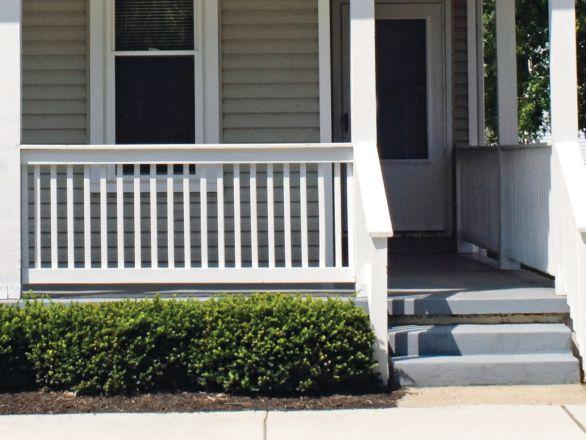



Edmonton contractor
Les Yochim, president of the BelVan Group of Companies, is constantly adjusting his sails to take advantage of Alberta’s somewhat volatile economy.
Interview By John Bleasby
Although it is the provincial capital and the quieter of Alberta’s two major cities, Edmonton is nevertheless impacted by the ups and downs of Western Canada’s economy. No one appreciates that more than contractor Les Yochim, president of Edmonton-based BelVan Group of Companies Ltd. Canadian Contractor spoke with Yochim about the importance of understanding the business cycles in his market and the need to be flexible.
We hear much about Calgary’s economic cycles but less about Edmonton’s. How do they compare?
Calgary’s economy and labour market has been affected much more negatively than Edmonton’s due to its large reliance on the oil and gas sector.
Edmonton, although heavily dependent on oil and gas, has benefitted from several large infrastructure projects over the last two years that have sheltered the labour market from the drastic job losses experienced in Calgary during








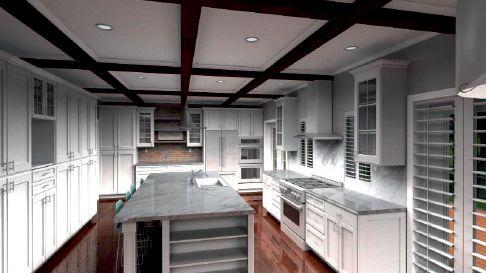


WE HAVE PUT MORE FOCUS ON ENGAGING AND MANAGING SUB TRADES ON OUR PROJECTS RATHER THAN SALARIED EMPLOYEES
the same period. Calgary’s “white collar” industries are hit the hardest and fastest during a downturn in the price of oil or when other negative market conditions occur. Project planning gets shelved and offices become ghost towns.
However, the manufacturing and construction jobs in Edmonton that result from that planning are the ones that are approved and in the construction stage, and therefore tend to get completed because the money has already been committed.
How does this difference impact your labour market in Edmonton?
I believe that when times are good, Calgary gets a lot of people moving there to take advantage of the booming
economy, mostly in the engineering and technology trades. Edmonton, on the other hand is more of a “blue collar” town. It’s definitely affected by the fluctuations in the oil and gas market, as I say.
However, once the planning projects in Calgary are cancelled or put on hold, it seems to take a while for the ramifications to hit Edmonton, maybe not until a year or so later. Therefore, we’ve noticed that a lot of people who move here end up staying long term, me included.
I moved to Edmonton in 2000 from Vancouver, promising my girlfriend at the time (now wife) it was a three-year plan. We’ve been here for almost six consecutive three-year plans and we now consider the Edmonton area our home.


From connecting with your crew wherever they are, to ensuring a change in plans doesn’t mean a change in schedule, your business can do more and make more on Canada’s fastest ranked and largest mobile network. 1
Business Bonus: Get a bill credit of up to $300 when activating select smartphones on a 2-year business plan 2
Edmonton housing took a big hit in 2016 in terms of new home building permits. How bad did it get and how did it impact your company?
We experienced several prospective customers putting the brakes on projects in 2015-2016 due to job uncertainty. Some of these projects were already in the drawing creation stage when we were asked to stop. In late 2016 we were forced to make the very difficult decision to cut four of our 10 staff members, three in the office, one in the field, and decided to put more focus on engaging and managing sub-trades on our projects rather than salaried employees.
Statistics indicate that renovation spending in Alberta overall has been booming lately. Has that changed your competitive landscape?
We’ve noticed an increase in the number of customers looking for fairly substantial renovations, customers who have decided to spend money on their existing homes rather than build new. As a result of the slowdown in new home construction last
Alberta home renovations
year, we’re also seeing some big home builders who were building 150 to 200 homes a year and who weren’t previous competitors in our market now doing infill projects and offering renovation services because of the density intensification push from the City of Edmonton. The residential side has definitely become more competitive as a result.
I’ve also noticed contractors joining forces with other trades to offer more complete services or expanding their service capabilities to be more of a one stop shop. There are also a handful of Edmonton home builders who have chosen to open shop in Fort McMurray, moving up there with crews to take advantage of the rebuild going on there.
How have you adapted to these changes? We ourselves have diversified and moved heavily into the commercial tenant improvement market, which is really booming. We likely wouldn’t have been able to stay in business if we were reliant on only residential work over the past couple years.
Millions of dollars 2,000 1,800 1,600 1,400 1,200 1,000 800 600 400 200 0 Q1'07 Q1'09 Q1'11 Q1'13 Q1'15 Q1'17
effect of June 2013 flood in southern Alberta
SOURCE: STATISTICS CANADA, THE DAILY, JUNE 2, 2017 AND CANSIM TABLE 026-0013
WE'VE NOTICED AN INCREASE IN THE NUMBER OF CUSTOMERS LOOKING FOR FAIRLY SUBSTANTIAL RENOVATIONS, CUSTOMERS WHO HAVE DECIDED TO SPEND MONEY ON THEIR EXISTING HOMES RATHER THAN BUILD NEW
We’ve gone from a two-thirds residential mix to a two-thirds commercial mix today. I find the margins better on the commercial side and the competition slightly more sophisticated in terms of safety and operating procedures.
We’re a small company but we have overheads similar to the other commercial players, versus the pick-up truck contractor with an office on the front seat. cc

Fiberon Symmetry Decking delivers where wood falls short.




With its elegant matte finish and rich color palette, Symmetry ® Decking gives your customers the authentic wood look they want without all the maintenance. Easy to cut and install, Symmetry Decking works with hidden or face fasteners and is backed by 25-year warranties. The four-sided PermaTech ® cap layer resists staining and fading, while the advanced composite construction prevents splintering, cracking, and decay. Build with the boards that outperform wood. Learn more at fiberondecking.com.

Asa contractor and entrepreneur, you know that having quality materials delivered on time can make or break your business. So, what if you could rely on building materials being delivered hassle-free? What if you could spend your time managing projects rather than products?
Dan and Emily Moulton, of Hanover Home Hardware Building Centre in Hanover, ON know the impact of making sure their contractors are happy. They understand the difference that quality products, quick turn around and great service can have on the businesses of their contractors.
If a client has an issue with lumber materials on-site, the PRO Contractor Services team makes it a priority to solve the problem, delivering the products on-site efficiently. In fact, if they are ever short staffed, Dan will personally deliver materials to the work site to ensure the project is completed timely and successfully for his contractors.
This approach is a winning formula and is a prime example of why Hanover Home Hardware Building Centre received the Walter Hachborn Store of the Year award for 2016. Home Hardware’s PRO Contractor Services helps Dealer-Owners do business the right way.
“With any sized project, our customers know we will always be there when they need us. We think of our contractors’ customers as our own. We have the equipment, we have the people, and we have the resources to deliver what they promised to their customer. That is the purpose of our
Pro Sales Team, to supply contractors with the resources to make their business successful,” says Dan.
At Home Hardware, PRO Contractor Services is nation-wide program where Home teams are dedicated to supporting the needs of contractors and their businesses.
Home Hardware’s PRO Shows offer innovative home improvement products that will save you money. HH PRO Shows have exclusive deals on trade items with industry experts available to answer your toughest questions. Stay current with upcoming trends and products news that have the industry buzzing.
Keep informed with quarterly newsletters emailed straight to your inbox. With the click of a button, you can
stay up-to-date on leading-edge products that contractors trust. Save money and time with email alerts on special deals.
Designed with the project in mind, you can learn how Home’s PRO Contractor Services team offers you the support to fuel your projects. Provide a list of materials needed for a job and we’ll look after it. It’s easy and worry free.
Focus your time on building and not on estimating the supplies required.
Get your materials fast and eliminate time spent in-store. Through our easy to order process, contractors can replenish stock by ordering through email, phone, or fax. No need to come to the store as you can re-order from the jobsite or home office. Orders are always accurate, limiting down time.
PRO Contractor Services also include: home plan service, package pricing and credit services. Find more information, visit homehardware.ca.


Architect: Ali Malek-Zadeh, Urbanscape Group, Toronto
Contractor/Designer: Rose Barroso, Barroso Homes, Toronto
By John Bleasby
Photography: Rob Holowka, BirdHouse Media
For all its bravado as Canada’s financial centre, what makes Toronto geographically unique is its system of ravines. Three watersheds – the Humber, Don and Rouge Rivers – empty hundreds of square kilometres of rural, suburban and urban land that separate the Oak Ridges Moraine greenbelt to the north from Lake Ontario to the south. These ravines are a major part of Toronto’s parkland setting: they comprise approximately 17 per cent of Toronto’s total area. And some 60 per cent of these ravines are owned and controlled by the City of Toronto and subject to complex development restrictions put in place by the Toronto and Region Conservation Authority after 81 lives were lost by the raging floods of Hurricane Hazel in 1954.
These flood-control regulations present a challenging scenario for any builder wishing to rebuild or renovate a home on the edge of these ravines. Rose Barroso and her Toronto-based company Barroso Homes (see our last issue for a profile) were ready to tackle these complexities when Rose sought approval to replace a modest 70 year old bungalow on the steep west bank of the Humber River with something very different: a modern 7,500 square foot, 5-bedroom show-stopper.
The Hillside House followed closely on the heels of a similar Barroso Home project nearby, giving Rose some understanding of how to make the project fit within templates that would appeal to the conservation authority decision-
Composite wood was used for all exterior decks including the contrast insets in the concrete deck. “I would never use any natural wood for decking, whatsoever,” says contractor Rose Barroso.
Opposite: It took a year and a half to receive permits for the pool. Originally planned to run across the rear of the house, parallel to the ravine edge, the pool had to be downsized and relocated to the side of the house away from the ravine edge.
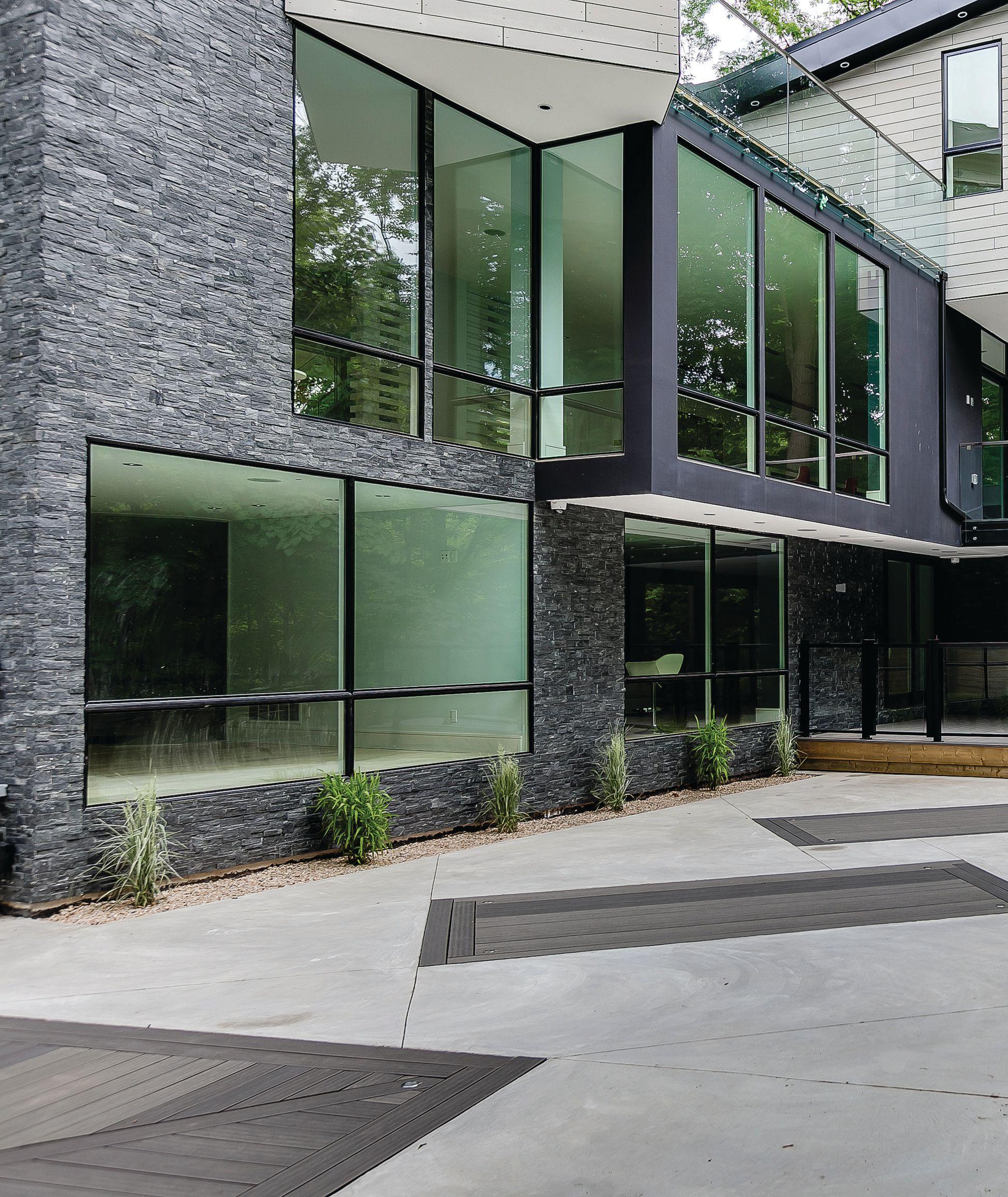

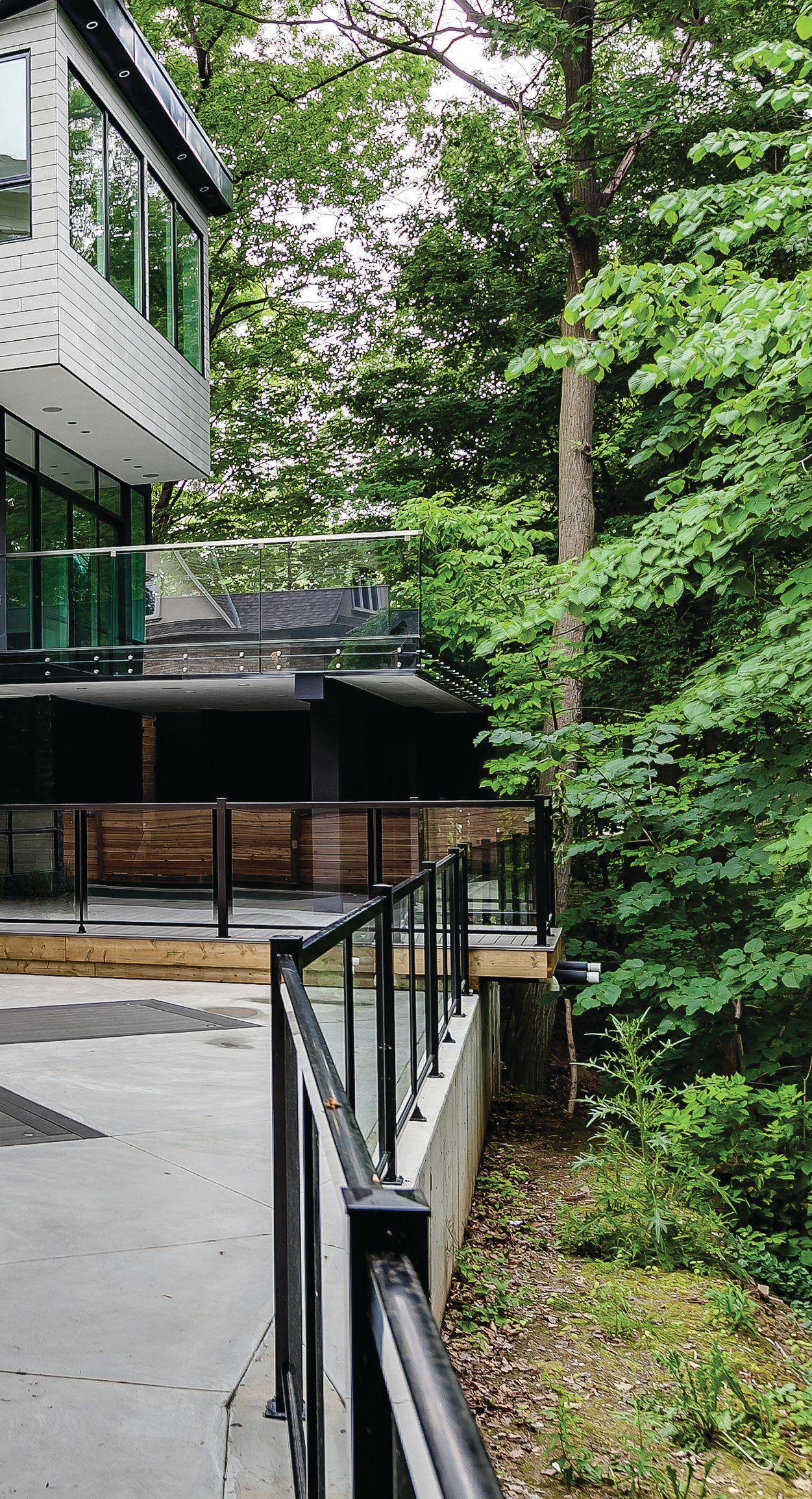
makers. “They would never allow me to come in and tell them that I was going to tear down an existing house, excavate, and build a new house,” says Rose. Others had tried that approach and failed.
Two authorities control two key defining lines: the Top of Bank Line, beyond which you cannot go even if it’s within the property boundary, and another setback further away from the Top of Bank Line, restricting the placement any new building. Critical to project approval was Barroso Homes’ intention to use existing foundation walls.

“The conservation authorities aren’t going to let you upset anything because they are concerned about the stability of the bank,” Rose explains. “The less work you are doing there, the happier they are. I approached both departments and simply said, ‘I will not touch the existing foundation; there will be no excavation. Here is what exists. I just want to push out this one corner about six feet to slightly adjust the existing footprint, and then build up from there.‘ ” By retaining the existing foundation walls, the project became a renovation, not a new build — a world of difference in the eyes of the conservation authorities. Rose also promised that any digging would be done by hand. “It’s slower and there’s no heavy machinery disturbing the soil.”
Nevertheless, it was not as straightforward as it first appeared. The existing foundation, while determined as being in good shape, still required reinforcement with rebar and new concrete. Furthermore, wooden tie rails were holding back the soil at the top edge of the ravine to prevent decay and
Continued on next page
erosion. This old wood was deteriorating and had to be replaced. “We needed to get our engineers talking to the managers at the conservation authorities and explain that we had to reengineer enough support by going down ten feet and pouring a new solid concrete support wall reinforced with rebar, right up to the level of the outdoor deck.”
From there, the project was simply a matter of designing and building a house to meet Rose’s exacting standards and vision. “I needed to take extreme advantage of the natural ravine. In the summer it’s like living in a tree house: all you have is the green around you. In winter, and because the area is quite sheltered, the snow hangs on the evergreens and deciduous branches. It’s a fairyland.”
When it comes to material selection, Rose is driven by a single-minded approach. “I’m always on the hunt for new materials. I want to be the innovator, not the follower. I want to be above and beyond.” This led to the use of premium European cladding combined with the development of her company’s own rain screen and ventilation systems underneath, unique combinations of 2-pound spray foam and batt insulation for R37 ratings in the walls, and comprehensive pre-wiring for every conceivable automated smart home convenience hidden in walls and ceilings.
The living areas are spacious — 10 foot ceilings, vast amounts of natural light, and a free flowing room-to-room layout. The strategic placement of doors and sliding glass panels define spaces, allowing privacy only as needed. “With a home like this you need fluidity,” says

In order to eliminate visible bulkheads, all ducting, plumbing, and wiring runs along the underside of the roof and inside walls. Pre-wiring in the walls anticipates every imaginable automated convenience.
All ductwork is spray foamed and then framed within its own structure under the roof deck. Ceiling drywall is installed on a system of what Rose calls ‘resilient metal channels’ that allow flexing without cracking.
A ten foot high concrete wall, reinforced with rebar throughout, replaced decaying wood ties that were retaining the top edge of the ravine. The wall was built up to support the large concrete outdoor entertainment deck.
Rose. “This is why it’s modern; this is why it’s bright.”
In combination with the large outdoor entertainment areas on two levels and a 25 foot pool, this is a home for hosting friends in style. As with other Barroso Homes projects, the Hillside House was a spec build. It quickly sold in 2013 for around $4 million. cc

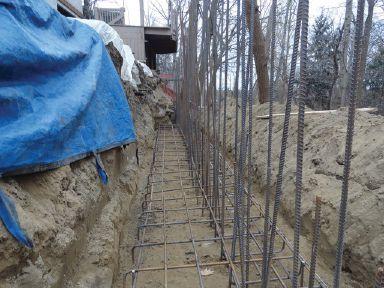
















• Three types of thin-set mortar available: SETTM Premium unmodified
ALL-SETTM Specialized modified
FAST-SETTM Rapid-setting


• Specifically formulated for Schluter membranes and boards
• Suitable for use with ceramic, porcelain, and stone tile, including large and heavy tile
• Sag-resistant, smooth and creamy, and easy to handle and spread



MILWAUKEE
Cordless Rotary
Hammer
Page 29

XANTREX
Power Backup System
Page 29
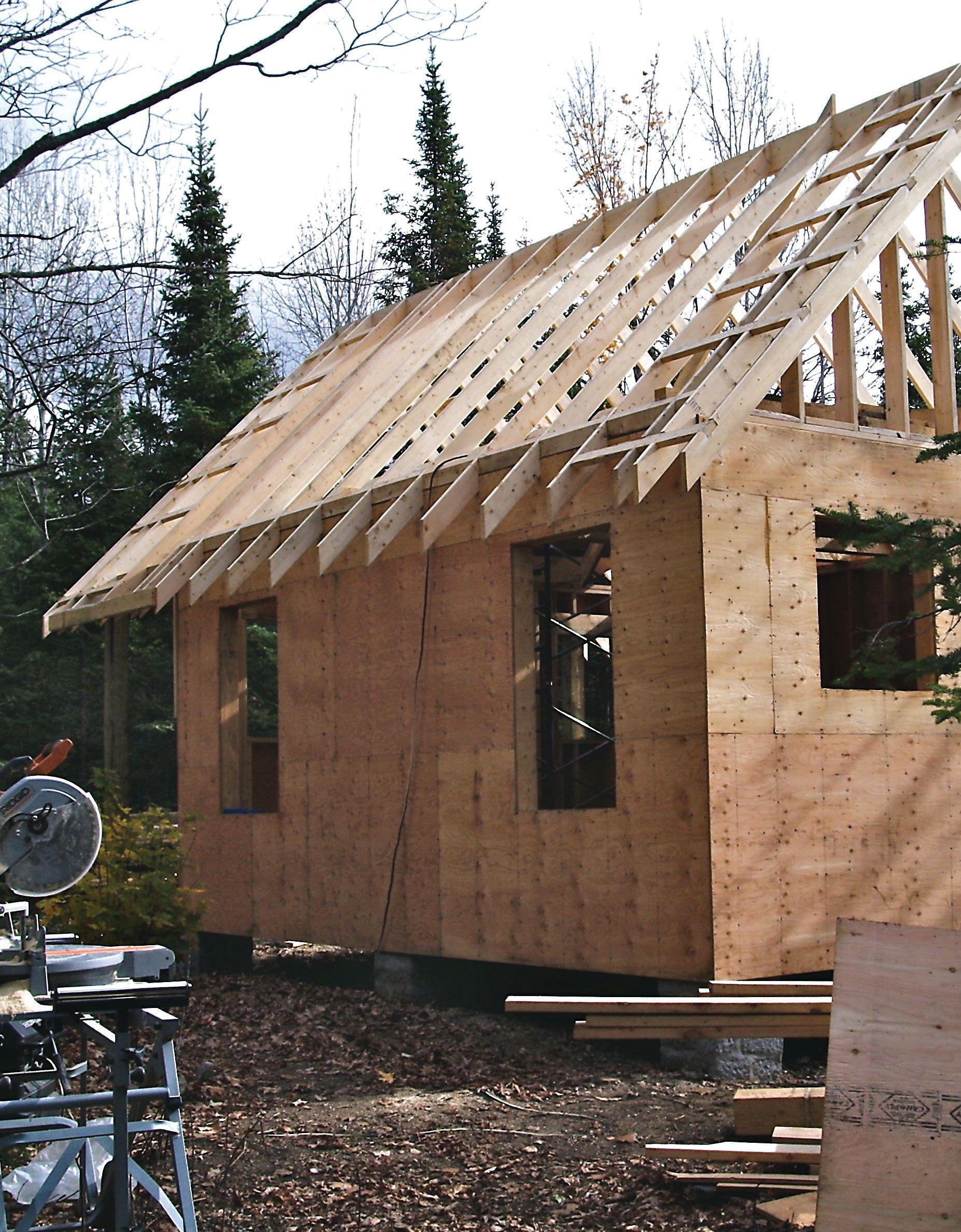
Building with natural-looking materials that don't require constant care
COMPATIBLE
Compatible with all our 20V MAX* tools

WORLD’S FIRST BATTERY PACK THAT AUTOMATICALLY CHANGES VOLTAGE WHEN YOU CHANGE TOOLS.
The FLEXVOLT™ battery's ability to automatically change between two voltages gives users a serious advantage when it comes to efficiency. It's the battery that not only powers, but improves the runtime** of our DEWALT® 20V MAX* tools, so you don't have to invest in a whole new system. It's the battery that brings the power of corded to a new lineup of 60V MAX* and 120V MAX* DEWALT® tools so you can finally work on a fully cordless jobsite. Built Guaranteed Tough®, Built by DEWALT®.
EXPANDABLE
Brings power to a whole new lineup of tools
POWERFUL
Combine two 60V MAX* batteries for revolutionary cordless freedom

By Steve Maxwell
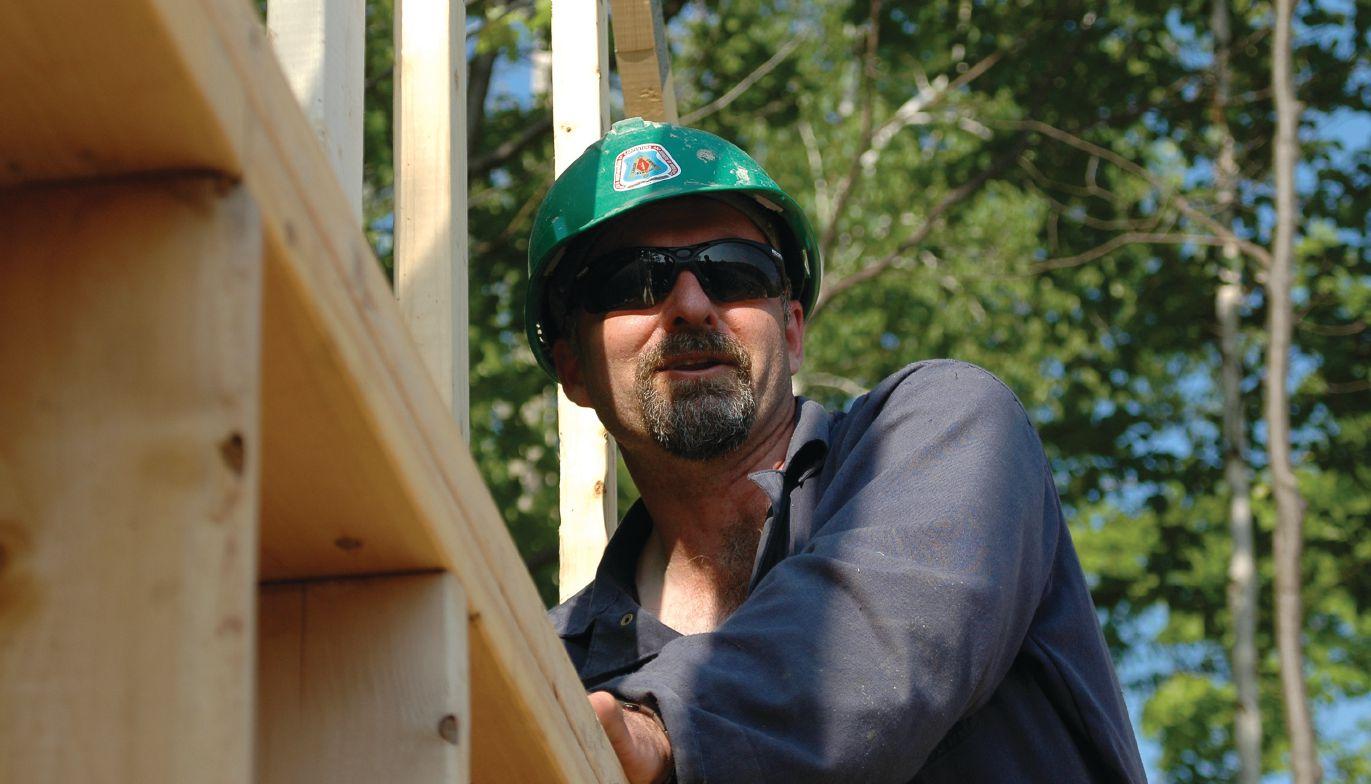
Back in May I got an email from a contractor named Cam. He had a problem with floor framing in a basement built over bedrock. He wanted to talk.
A few minutes on the phone and I knew exactly what the issue was. Basements built over bedrock can be incredibly damp during summer because the cold rock floor cools the air that creeps in from outdoors. Years of nearly 100 per cent relative humidity for weeks on end each summer had caused creeping rot to set in on the plates. “The punky wood doesn’t extend all the way across the plates yet,” Cam explained. “The joists are still resting on a couple of inches of good wood on the inside edge.”
After talking about how ventilation during hot weather is actually the source of damaging moisture in basements built over bedrock, Cam and I got down to business – how to replace those plates.
His plan was to jack the floor frame up a bit with beams resting on the underside of the joists. Then he’d rip out the rotting plates and jam new ones in before lowering the floor frame on top. “That sounds like a great way to start swearing,” I predicted. “You probably won’t be able to raise the floor frame enough without damaging something, and even if you could get 1/8” clearance, the new plates probably won’t go in.”
“Yeah, you may be right,” said Cam. “It’ll even be worse because I was planning to put some Blueskin on the underside of the new plates to protect them from dampness wicking up through the
hollow sections of the block wall.”
We talked back and forth for half an hour, bouncing ideas off each other until we came up with a good plan. Cam would support the floor with jacks and beams, rip the old plates out, then fill the top part of the block cavities with mortar. I advised against concrete because the aggregate needs vibration to settle. Mortar is easier going that way.
“The Blueskin probably isn’t going to make enough of a difference to stop rotting of the new plates,” I worried out loud. “You need to get the homeowner to use a dehumidifier whenever it’s hotter outdoors than in the basement. You should also use pressure-treated wood meant for foundations. It’s way more rot resistant than regular pressure treated.”
Together we settled on a plan where Cam would use a benchtop planer to shave 5/16” off the thickness of the plates, giving him room to slip the new plates into the old space. Wedges driven in under each joist and locked in place with a shot of PL Premium would fill the gaps before the jacks came out.
As I hung up the phone I realized how powerful an engineering tactic it is to bounce ideas off each other. Cam reached out to me, but I’m sure we came up with a better plan because of tag team engineering. If you’ve ever done it with the right person, you know how well it works.
steve@stevemaxwell.ca
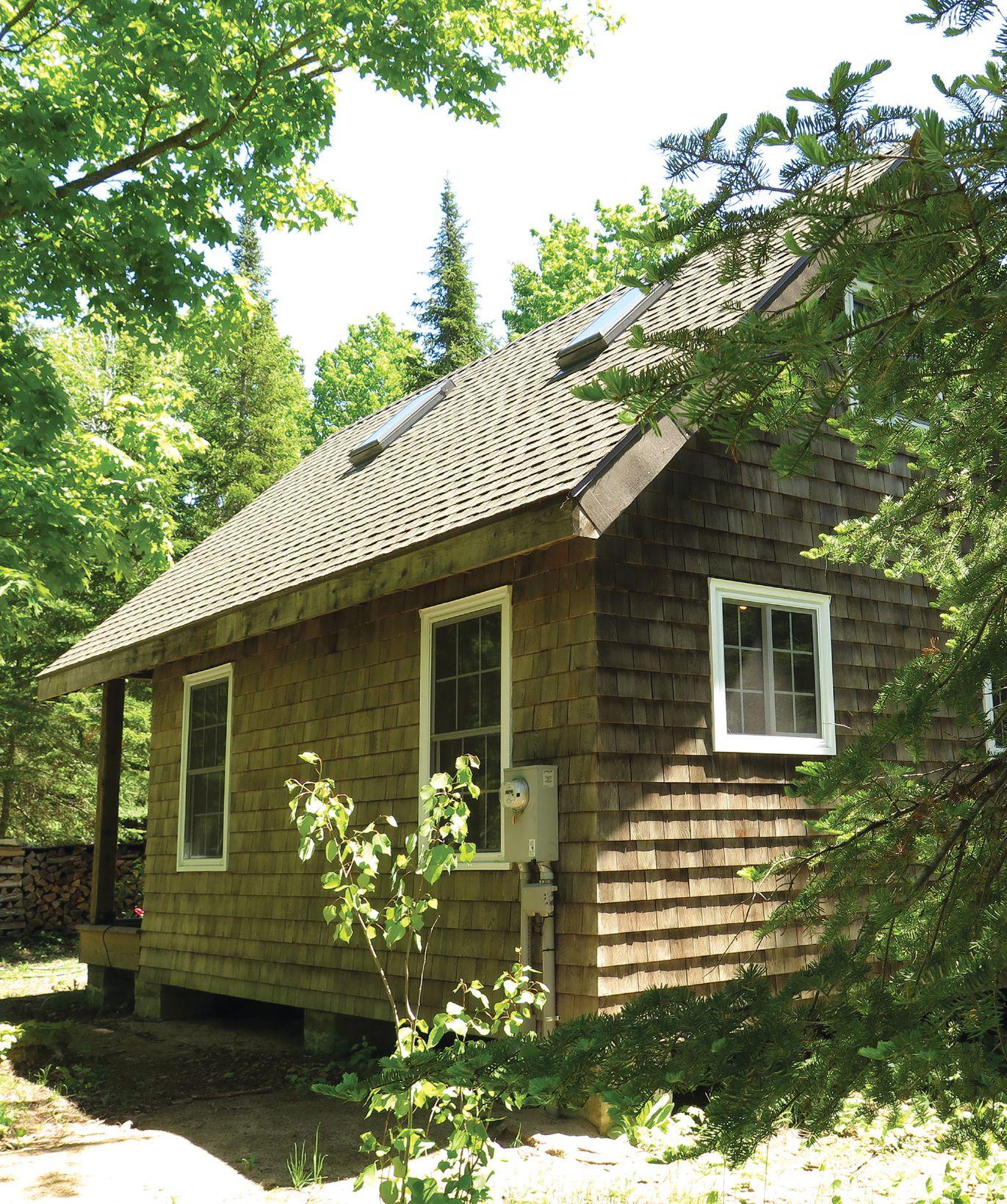
Five real-world building strategies that combine low maintenance and natural good looks
By Steve Maxwell
Ilive in Ontario’s cottage country, and this let’s me see the liability side of what many seasonal property owners endure. While having a rural getaway is a dream for many folks, it can also turn into a maintenance nightmare. It often does. The desire to create “natural” looking structures is usually what leads to the trouble. There needs to be more to it than just putting up a bunch of exterior wood, sloshing on some stain, then driving off to the next build. That’s the kind of thing that leaves property owners pulling out their hair in 5 years. The real trick is making country properties look and feel like they’re part of the natural landscape, while also building to minimize maintenance down the road. This is what these five easy keeper building strategies are all about.

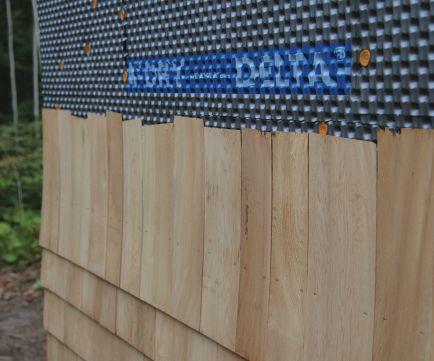
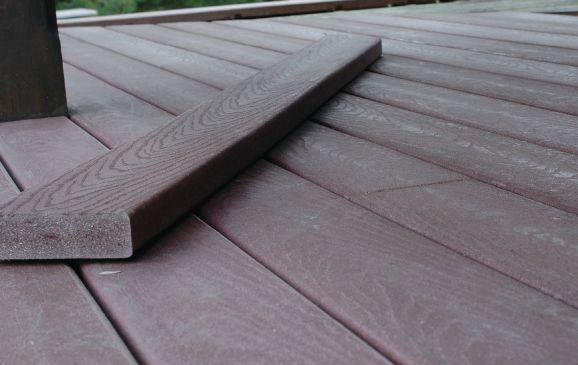
This under-used approach is one of my favourites because it combines natural good looks with amazing durability. I’ve seen properly installed cedar sidewall shingles last more than 50 years without any maintenance at all. You get the beauty of wood without the maintenance trap that most other forms of wood involve. Sidewall shingles also give you a lot of creative control. It’s easy to cut and installed patterns in the shingles that add a lot of beauty. Besides, working with real cedar shingles all day is a great thing. The work is clean, quiet and it smells good. You’ll get the longest lasting results if shingles are installed over some kind of vertical drainage detail. If moisture creeps in around windows or doors, or if condensation develops behind the shingles, it’s free to drain down and out of the wall.
Every good contractor needs to save property owners from themselves sometimes, and deck material choice is often one of those times. Too few homeowners realize what’s required to keep a wood deck looking like more than barn board. So if your client isn’t a barn board sort of person, alert them to the hassles of keeping a cottage deck finished. Remind them that refinishing work probably isn’t the reason they want a cottage, then make the case for non-wood decking. The biggest objection you’ll face is cost, but the numbers are deceiving. When your client chooses wood for a deck, they’re buying only the material. When they’re buying composite or synthetic materials, they’re buying material and sidestepping all future costs for finishing and refinishing. This is substantial. These days non-wood decking looks quite good too, especially the kind with wood grain details embossed in the surface.
Even on “natural” structures like log cabins, wooden soffit and fascia is visually unnecessary and technically difficult to maintain properly. Aluminum fascia looks great on any building, no matter how natural the siding, and soffit is often something you can do away with altogether if you frame a roof with rafters. Just wrap the fascia around the bottom edge of the two-by fascia board, then leave it at that. I prefer to use stainless steel nails to fasten the bottom

edge of the fascia (not the usual aluminum nails), driven into over-sized, predrilled holes in the metal. This lets the aluminum expand and contract without rippling as temperature changes. This is especially important if you’re installing brown fascia because it picks up more of the sun’s heat. This is also why I use polyurethane caulking to glue fascia joints together instead of anchoring face joints with nails driven into the wood. Tape the joints together while the caulking hardens and the aluminum remains free to expand and contract without buckling.
There are two reasons a covered porch is better than an ordinary open deck, especially at a country place. First, it let’s your client enjoy the outdoors more often. Covered porches provide a transition zone between indoor space and outdoor space – something that hardly happens in the city. Sitting under a porch roof during a rain is one of the great reasons to own a cottage. But on a practical level, a covered porch also does a lot to keep windows and doors in good shape by protecting them from the full brunt of the weather. A porch will keep driving rains away from a door, for instance, ensuring that leaks don’t happen. Keep the design simple by framing with rafters and lumber so the porch looks good from underneath. Prefinish the parts before installation or treat the underside with a wood weathering wash like the roof shown here. Use construction-grade two-by material for the sheathing and you’ll have lots of wood thickness to hide roofing nails.
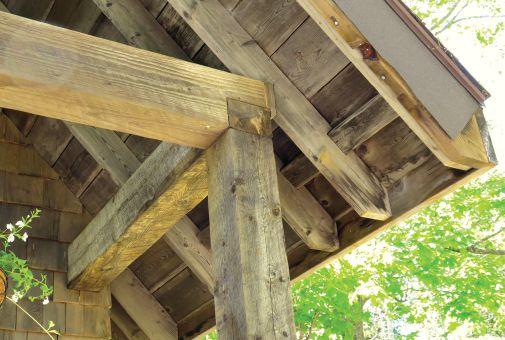
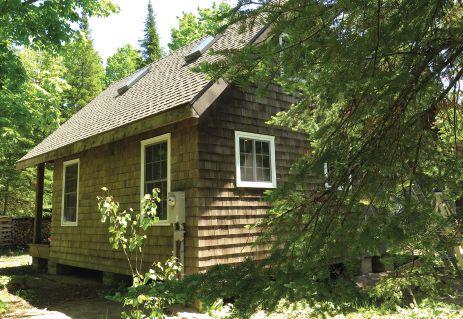
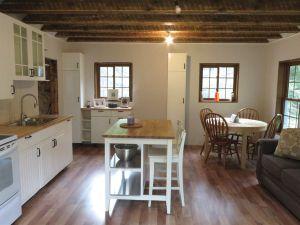
Building way too big is a common mistake property owners make when planning a lakeside retreat or rural getaway. This is especially true if your client comes from a community of monster homes back in the city. And as a contractor it’s tempting to go along with the mistake to build way too big because it means more work for you. The thing is, real success always comes from doing the right thing, not necessarily doing what’s best in the short term. Remind your clients that the whole reason for a country place is to enjoy the country. And you really don’t need a monster cottage to make that happen. A massive building is not what lakeside living is all about. Remind them that it’s easier to buy something than it is to maintain it. Small really can be beautiful. Lakeside developments and country retreats are looking more and more like suburbia these days and that’s a tragedy. The rural landscape and cottage life should be different than what exists in the city, and this difference begins with the buildings we put up. You don’t have the final say in these things, but the choices you recommend as a builder and the influence you exert on clients has a huge impact on whether or not cottage country stays beautiful without a crazy amount of maintenance.
MAXWELL’S PICK

I bought my first electric rotary hammer in 1988 and it cost $3,800 in today’s money. Masons at the time assure me this was the best hammer in the world, but every time I used it I found myself thinking of a WWI machine gun – big, heavy, entirely metal and not particularly reliable. Fast forward 30 years and the best rotary hammers weigh less than metal carrying case that first hammer came in. The Milwaukee 2717-20 may be the most striking example of small size with big power. Earlier this season I used it for part of an afternoon drilling holes in limestone bedrock for a project of mine. Two things impressed me. First, the 271720 is faster than you’d think given its size. Not as fast as the big, twohanded hammers with power cords, but almost. And second, battery life is long enough to be surprisingly practical. Heavy-draw cordless tools such as rotary hammers usually force you to run back and forth to the charger a lot. The 9.0 amp-hour battery that came in the kit was only half empty after my work session was done. With its $1,000 price tag the 2717-20, battery and charger is not for casual use. But it’s also way more tool for way less money than we’ve seen before.

MAXWELL’S PICK
XANTREX POWER HUB 1800 Household Power
If you’ve got clients interested in alternative power systems, you might want to point them towards a Canadian device I’ve been looking at. It stores large amounts of electrical power from multiple sources and converts it to AC current for household use. Think of it like a massive battery backup system for the home. The Xantrex Power Hub 1800 combines three functions in a way that nothing else does yet. First, it’s got room for as many as four automotive-size batteries, totaling about 400 amp-hours of energy storage. Second, it’s got multiple connection options that allow solar, wind, generator and grid feed of power into the battery bank. And third, the internal inverter that converts the DC power from the batteries into 1440 watts of AC power at the four 120 volt outlets also functions as an uninterruptible power supply. If grid power goes OFF, the PowerHub automatically switches to battery supply fast enough to keep everything running, including computers. Xantrex (www.xantrex.com) is the BC-based company that design the PowerHub entirely in Canada. Cost for the 1800 without batteries is $1,650.
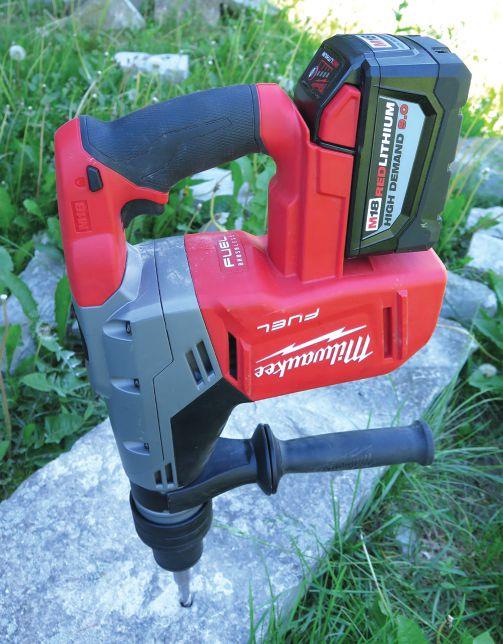

It’s a good framing crew. But now they’re fighting. What does the boss man do?
Ian Dobson preferred to leave his framing crew alone when they ate their lunches. He didn’t want to cramp their style. Although Dobson knew there were some ‘characters’ on his team, they appeared to be a cohesive unit. He figured joking around was part of the camaraderie.
One of Dobson’s men, Howie, loved to dominate the group. Howie was physically big, acted bigger, and really seemed to enjoy poking fun at Bryan, a short stocky fellow who didn’t talk much. Howie had nicknamed him ‘Pastry,’ and constantly joked about Bryan’s height and width in front of everyone.
Now, Howie has really pushed it too far. He has made some lewd comments about Bryan’s wife. It is deathly quiet around the lunch circle. You can feel it coming. Sure enough, Bryan launches himself full force at Howie, flailing away with both his fists. Dobson hears the yelling and walks in to see the other guys separating the two men, each with blood on their faces.
What should Dobson do now? See the options at right.

1. Fire both Howie and Brian. He can’t allow fighting on the site.
2. Offer Howie and Brian some company-paid counseling to help them deal with their attitudes and anger.
3. Suspend both Howie and Brian for a week so tempers can cool down.
4. Sit Howie and Brian down and try to figure out how to get them working together again as soon as possible.
5. Something else. Please explain.
HOW TO ENTER
Email your answer to John Bleasby (jbleasby@canadiancontractor.ca)
Your suggested solution can be any of the above ideas, a combination, or your own solution entirely. Please explain your answer in up to 300 words of text. The contractor-submitted answer chosen as our winner will

In our last issue’s contest, trim carpenter Johnny Millen leaves his tools over the weekend in a site trailer owned by contractor Bryce Christie. The trailer is broken into and Millen’s tools worth $4,000 are stolen. How should Christie deal with the loss, if at all?
Some respondents placed the responsibility on Millen. It was his decision to use the trailer for storage, they said, and if he had no insurance, that’s a shame. Happily, no one suggested a false claim should be submitted: Full credit to the integrity of our readers! However, a contractor like Bryce would certainly have comprehensive insurance covering his work sites. No matter who owned tools that were stolen, a legitimate claim could be made that, according to our sources, would not impact Bryce’s premiums going forward. Our panel of judges selected the outline submitted by Mark Bernier of Minden, Ontario for his excellent and detailed explanation of the correct resolution. Mark will receive a DeWalt 20V XR VersaClutch Drill. Congratulations, Mark!
a FLEXVOLT 60V MAX 6-1/2" Track Saw (DCS520T1) complete with two FLEXVOLT Lithium Ion 6.0Ah batteries and charger. Approx. retail value $699.
Entry deadline is August 25

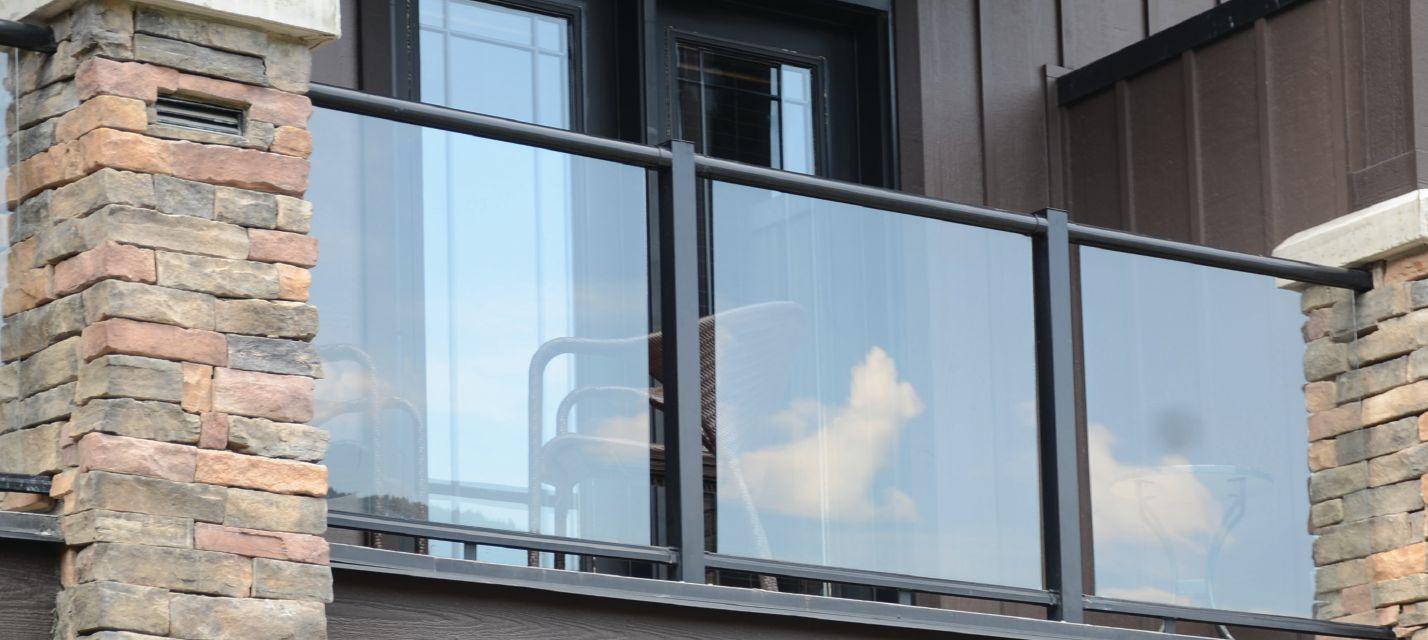





Habito® drywall finished with NO-COAT ® Corners creates the world’s strongest 1/2" drywall system. So your walls always stand up. No matter what attacks them.
Impact resistance of a 5/8" abuse board | Holds 30 lb. per screw without anchors | Corners won’t dent or crack